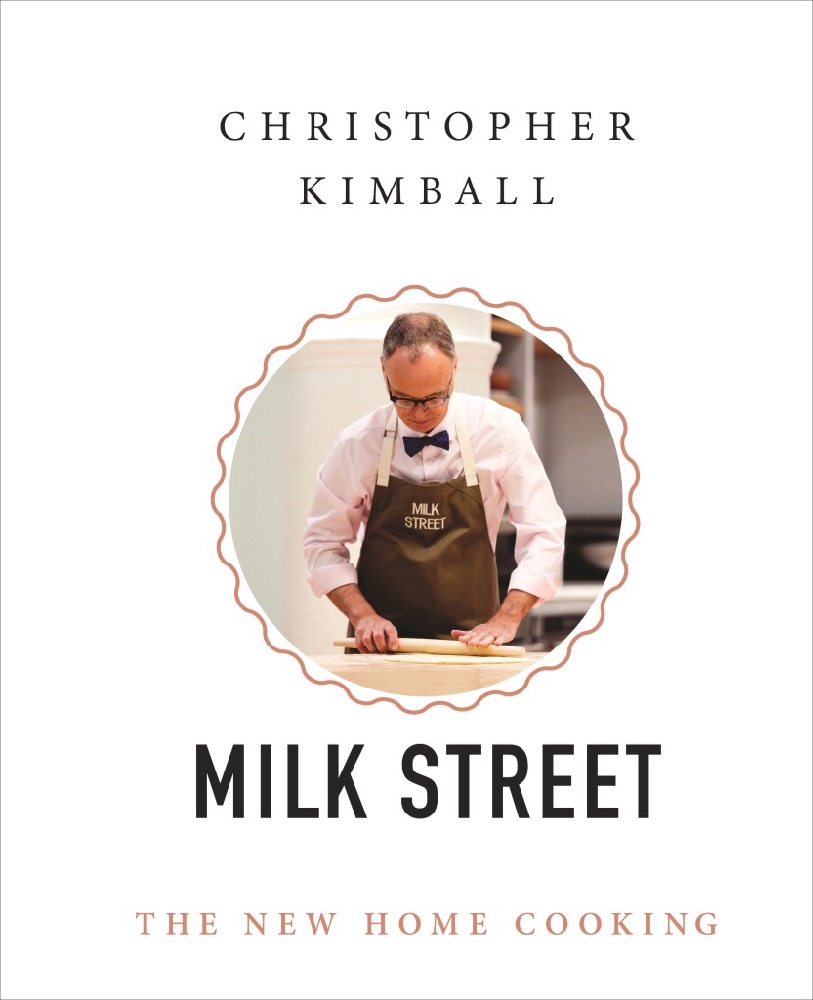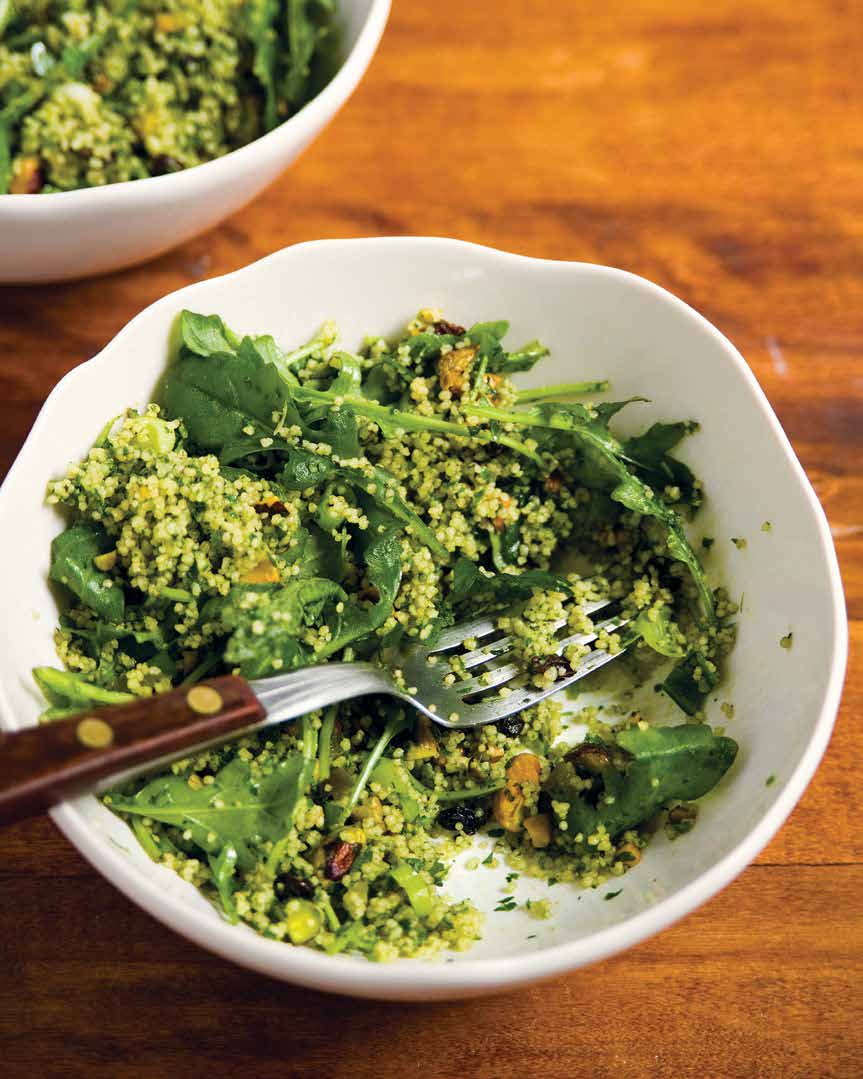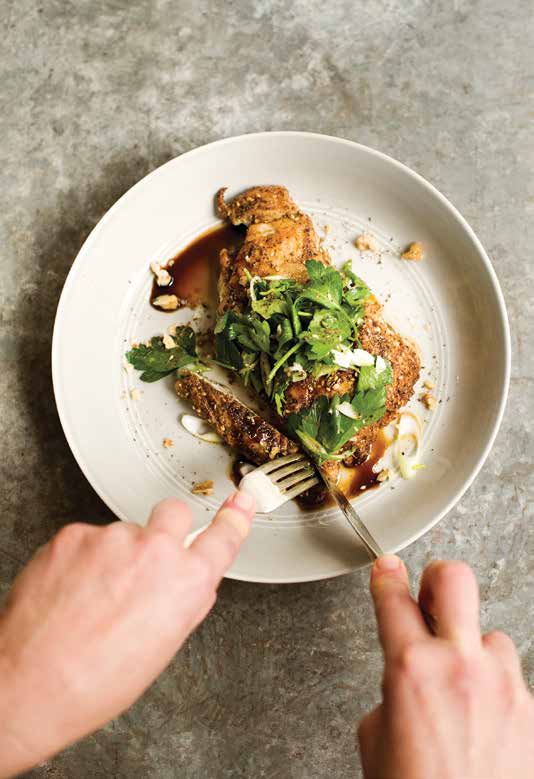Christopher Kimball's Milk Street: The New Home Cooking
Christopher Kimball was a co-founder of, and a creative force in America's Test Kitchen, which includes Cook's Illustrated and Cook's Country magazines.
Last year he left ATK and began his next act with the launch of Christopher Kimball's Milk Street, a media company with a magazine, cooking school, television and radio programs, special events, and now a cookbook with a title that combines the company name with a bold declaration: Christopher Kimball's Milk Street: The New Home Cooking (Christopher Kimball's Milk Street, ©2017, Little, Brown and Company, hardcover, black and white and full-color photographs, 336 pages, $40.00).
Over the years, home cooks learned that if something came from Chris Kimball, you could trust it. Recipes were reliable, information was vetted, you could depend upon the most arcane detail about which knife to buy or cooking method to use, and there was a confident spirit of good eating. I know many home cooks who credit Chris with their courage and confidence in their kitchens. So when he produces the first book from his new venture and rather audaciously calls it "the new home cooking," it's provocative. What was wrong with the old one?
When I opened my copy of Milk Street (which is what I'm going to call this book despite its lengthy title), my first impression was that Chris Kimball, famously from Vermont, had finally discovered ethnic food. But I was being both hasty and inattentive to what he was doing. I needed to not judge from the recipe index but instead read the book, see it as a whole, and cook from it. I also talked with Chris, having had breakfast with him when he was in New York at the start of his book media tour.
I asked him if there had been an epiphany that led to this book and the entire vision for Milk Street. He spoke of a trip he took to Vietnam about ten years ago, a trip he writes eloquently about in the introduction to Milk Street. The journey stunned him and changed him. On this trip and subsequent ones to other parts of the world, he watched home cooks cook and ate their food, bringing back what he calls enduring memories in which flavors blended with landscapes and the people he met. From these experiences grew Milk Street and became the message and the utility of this book.
Chris also talked with me about how much of our American cooking is influenced by the French canon, in which technique, instead of spices, is what's used to develop flavors from often-costly ingredients. For example, when sauces are made from reductions and lightly seasoned meats are braised for long periods. It's not that this kind of cooking isn't wonderful but it isn't often practiced in home kitchens, or it can intimidate or frustrate us when making a satisfying (and healthy and affordable) dinner is the goal. In fact, when you travel the world, you see that most cultures cook inexpensive ingredients very simply -- perhaps using only one main element, like a chicken -- and then create layers of flavor with spices, fresh herbs, and dressings and chili pastes and other seasonings.
I came to see that like the rest of Milk Street's mission, this book is a resource and a guide for home cooks who wish to sit at the global table and bring its flavors, health, and boldness into their kitchens. As Chris says, "Ethnic cooking is dead. We are all simply making dinner."
Introducing this approach to American home cooks may take some persuasion, despite our nation's kitchens already being international, reflective of our great diversity. Kimball and company surely know a little coaxing may be in order after reading their cookbook's introduction, which is a thoughtful, opinionated, inadvertently political, and at times lyrical essay about how the world really cooks -- and really eats, which it seems, by the way, is quite well.
So when I put Chris's manifesto together with the recipes, I began to understand what Milk Street is striving to do.
The Book
First, it's gorgeous. With a generous 9-by-11 inch format, and beautiful photography, the book is a pleasure to handle and cook from. The binding opens flat. There are artful black and white photos with the introductory essay and then detailed, appetizing, often full-paged, color photos of the plated finished dishes for just about every recipe. This is important because many of the recipes are for dishes that may be completely unfamiliar to make or to eat -- at least they were for me. If you have no idea what you're going for and only have the recipe to guide you, a photograph is a huge help.
I also love that the photos and the recipes are laid out opposite one another, and each recipe is only on one page, so there's no need to be flipping pages back and forth while you're trying to cook. The cover is white and has a cutout where Chris Kimball's photo appears from the first inside page, just in case you forget that it's his book and his vision. No snark intended by that -- so much of Milk Street is about his expanded ambition for home cooking and his hope that you embrace it, so why not be reminded of that? Consider his dedication: "This book is dedicated to the notion that cooking is the universal language of the human spirit." I loved that.
A disclosure. The book's editor at Little, Brown and Company is Michael Szczerban, who was one of the editors of my book when it was published by Simon & Schuster in 2010. I didn't know this when I agreed to review Milk Street, by which time I had already read the book and written my first draft. I admire Michael but this didn't influence my opinions here.
The Recipes
In eleven chapters, this book offers more than 125 recipes, written with typical Chris Kimball meticulous details and guidance. They are mostly simple, and mostly healthy (the brownies are swirled with tahini, the chocolate chip cookies include rye flour), and they share the trait of being made with a broad range of spices, fresh herbs, and other easy-to-score or easy-to-make ingredients. If you can't find something in your local supermarket, there is nothing that can't be found in either an ethnic grocer or online.
Here are the chapters:
- Pantry
- Eggs, such as Baked Persian Herb Omelet, Korean Scallion Pancakes, and Chinese Stir-Fried Eggs
- Soups, including Miso-Shiitake Soup with Napa Cabbage, Georgian Chicken Soup, and Mexican Chicken Soup with Tomatillos and Hominy
- Vegetables, such as Lebanese-Style Tabbouleh, Thai-Style Napa Coleslaw with Mint and Cilantro, and French Carrot Salad
- Grains, with Quinoa Pilaf with Dates, Almonds and Carrot Juice, Coconut Rice, and Indian Tomato Rice
- Suppers, which are somewhat simpler, smaller dishes than dinners including Trapani Pesto, Welsh Rarebit with Bistro Mushrooms, and Turkish Meatballs with Lime-Yogurt
- Dinners, including Filipino Chicken Adobo with Coconut Broth, Cuban-Style Pork Shoulder wtih Mojo Sauce, and Oven-Poached Salmon with Thyme, Dill and Vermouth
- Breads, such as French Spice Bread, Italian Flatbread, and Multigrain Soda Bread
- Small Sweets, including Rosemary-Pine Nut Cornmeal Cookies, Date-Stuffed Semolina Cookies, and Swedish Gingersnaps
- Desserts, such as Caramel Oranges, Chocolate Tart, and Tangerine-Almond Cake with Bay-Infused Syrup
- Staples, Sauces and Seasonings, which include 25 things to make and then add to recipes, e.g., Fig-Olive Tapenade, Harissa, Jalapeño-Mint Sauce, Miso-Ginger Dressing, and 21 others
Pantry is probably the most important chapter in the book for it contains the means to creating the recipe flavor bombs. This is also where you'll develop a new confidence. The Pantry is organized by Fats, Acids, Fresh Herbs, Spices, Wine and Spirits, Seasonings (e.g., fish sauce, kimchi), Sweeteners, Starches, and Grains and Pastas. At first I felt a little arrogant seeing how many of the listed items I already had on hand, but by the end of cooking a few Kimball recipes, I realized I wasn't particularly deft in using them outside of whichever particular recipe initially got me to buy them. I would like to be better at choosing and blending spices and herbs and I think cooking from this book might help me.
So far I've test-driven four of the book's recipes:
Sweet-and-Spicy Ginger Green Beans. This Vietnamese-inspired dish transforms simple green string beans into a umami party with fish sauce, soy sauce, fresh ginger, red pepper flakes, rice vinegar, plus brown sugar which gets the same result as caramelizing in a wok without the wok or the heat or the fuss. The flavors and textures were amazing and it took about 20 minutes to cook (the recipe says 10; mine took longer; maybe it was the beans).
Herb-and-Pistachio Couscous. My husband and I loved this so much I made it twice in 10 days. In a recipe inspired by one by Yotam Ottolenghi, plain couscous is combined with dried currants for a touch of sweetness, toasted pistachios for crunch, ground cumin and minced pickled jalapeños and a little of their juice for complexity and heat, and then a paste of fresh cilantro and parsley for bright flavor. This is then tossed with baby arugula, making the dish more a salad-with-couscous than couscous-with-salad (you can see this in its photo). Both times I served it with pan-roasted wild salmon and the meal was a triumph. This dish took a bit longer to make than had the green beans, but not much -- after measuring things out, plus the time it takes to pluck parsley leaves off their stems, the actual cooking took about 30 minutes.
Spanish Spice-Crusted Pork Tender Bites. Having recently come back from a trip to Basque Country, I wanted to try this Spanish recipe that is often served as a pintxos (like a tapas, served as an appetizer) and seasoned with a wonderful Moroccan spice mix called ras el hanout (the recipe provides a similar mix-it-yourself blend in its place, made with easy-to-find spices). It was simple to prep and cook, and most of the recipe's 50-minute cooking time is spent leaving the pork to marinade in its dry spice rub for half an hour. While this recipe is showcased as an hors d'oeuvre, I made it as a main course (it served two perfectly) for a weeknight dinner. It's an excellent and big flavored alternative to roasting a whole tenderloin.
Za'atar Chicken Cutlets and Lemon-Parsley Salad. We have chicken for dinner at least once a week and it's sometimes a challenge to come up with interesting ways to cook it. So when I saw this recipe that combined boneless chicken breasts with one of my absolutely favorite spice mixes -- za'atar -- I had to try it. Besides the irresistible flavor pull of Middle Eastern za'atar, the chicken is also seasoned with smoky Aleppo pepper, bright lemon zest, and tangy pomegranate molasses. I served it with some roasted greenmarket cherry tomatoes and a little fregola, dressed only with olive oil and black pepper, to capture any errant juices from the fragrant chicken. It was outstanding (my husband loved it and even had seconds) and is certainly going into my weeknight chicken rotation.
We've been given permission to share two of these recipes with you -- the Herb-and-Pistachio Couscous and Za'atar Chicken Cutlets and Lemon-Parsley Salad.
While some of the book's recipes may at first seem a bit exotic, they can easily integrate into the way you already cook, such as when I served the Herb-and-Pistachio Couscous with roasted wild salmon fillets, made the way I have for years. I also think the recipes may give you more overall confidence and curiosity about using the spices and other pantry ingredients found throughout the book, making your cooking more expansive and making it less intimidating to explore cookbooks about the cuisines of other countries.
I started listing the countries that were the origins for many of Milk Street's dishes. Chris may have started his new journey in Vietnam, but the book also includes the flavors of China, Japan, India, Thailand, Burma, the Philippines, Turkey, Morocco, Israel, Spain, Italy, Britain, France, Sweden, Peru, Argentina, and of course, America.
I'm sure there are some I've missed. But no matter. This cookbook is not a food atlas. It is a story of how the world cooks. Let's join them.
Credits: Book cover design by Julianna Lee, book cover photograph of Christopher Kimball © Channing Johnson Photography, photo of Herb-and-Pistachio Couscous by Catrine Kelty, and photo of Za’atar Chicken Cutlets and Lemon-Parsley Salad by Connie Miller of CB Creatives.


